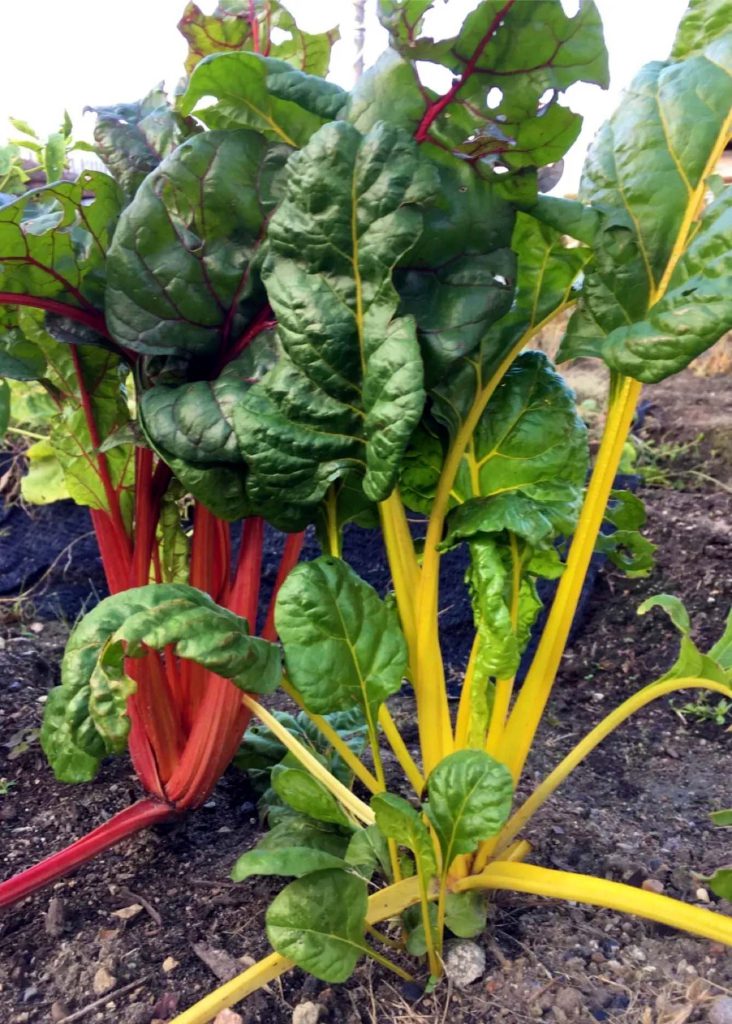
A member of the spinach family known as Swiss chard in recipes. The Japanese name, Fudanso, of chard comes from the fact that it can be cultivated throughout the four seasons. It seems that it was widely known in the Genroku era at the beginning of the Edo period, and the origin of the name is written as “It was named Fudanso because it is always there regardless of the four seasons”. It is cultivated in various places as a traditional self-consumption vegetable, and has various regional names. In Osaka and Kyoto, it is called Umaina. It is native to the Mediterranean coast, around the Caspian Sea, and Persia, and has been cultivated since around 1000 BC. This Swiss chard is characterized by vivid colors such as red, yellow, pink, and vermilion on the petioles and veins as shown in the photo. The leaf stalks and veins are the same color on the front and back, and the color is beautiful, so it is cultivated not only for food but also as a foliage plant.
レシピではスイスチャードの名で知られるほうれん草の仲間です。フダンソウの和名は、四季を通じて栽培できることに由来します。江戸時代初頭の元禄年間には広く知られていた様で、「四季絶えずあるゆえに不断草と名付るなるべし」と、名前の由来が記されています。伝統的な自家消費野菜として各地で栽培され、様々な地域名があります。大阪や京都ではウマイナと呼ばれています。地中海沿岸からカスピ海周辺やペルシアが原産地で、紀元前1000年くらい前から栽培されていた様です。このスイスチャードは写真のように葉柄や葉脈が赤や黄色、ピンク、朱色など鮮やかな彩りが特徴で、赤、黄、桃色の他にも黄緑や白などもあります。葉柄や葉脈の色は表も裏も同じように付いていて、彩りが綺麗な為、食用以外にも観葉植物としても栽培されています。
